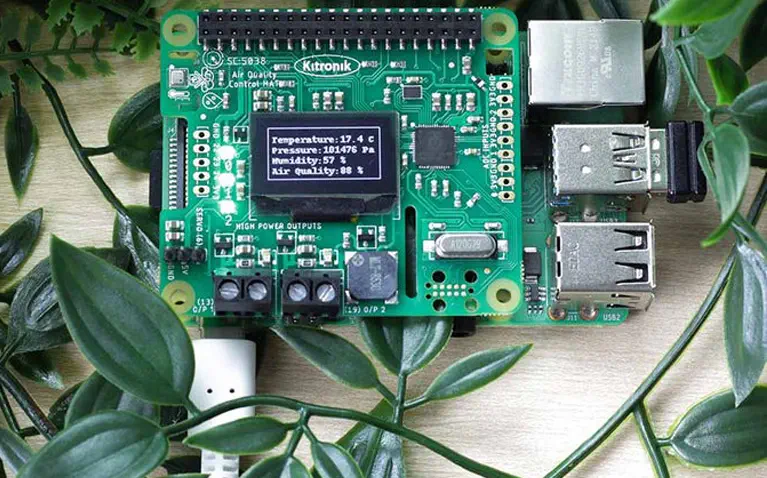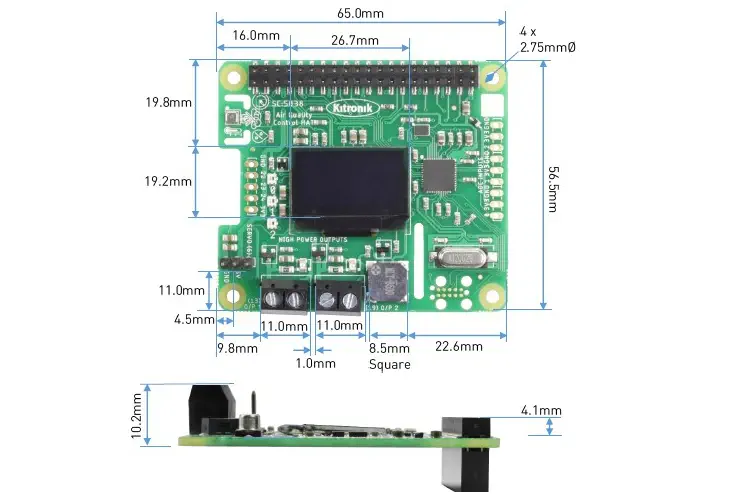- Kitronik Air Quality Control HAT for Raspberry Pi w/ Sensor Inputs & OLED Screen
- Compatible with all Raspberry Pi versions with a 40-pin GPIO connector
- Features a variety of sensor inputs and connection points
- Equipped with a black and white 128x64 OLED display screen
- Includes a package with code, README, and example programs
The Kitronik Air Quality Control HAT for Raspberry Pi w/ Sensor Inputs & OLED Screen is a sophisticated device designed to monitor, record, and respond to sensory data. This device is equipped with a variety of sensor inputs and connection points, specifically designed for the Raspberry Pi. It offers the capability to efficiently log, store, and display data using the Pi filesystem and an OLED screen.
The device also features connection points for external devices such as analog sensors, servos, motors, and heater pads. These additional features enhance the device's monitoring capabilities and allow for more reading-based actions. This HAT is designed to be compatible with all Raspberry Pi versions that feature the 40-pin GPIO connector, including Pi 2, 3, 4, and Zero 2.
The device's form factor adheres to the Raspberry Pi standard for HATs, including the dual row of pin sockets for connection to the Pi. The HAT is capable of reading inputs from a BME688 air quality and environmental sensor, which measures temperature, pressure, humidity, air quality index, and eCO2.

The device is equipped with a black and white 128x64 OLED display screen and three status ZIP LEDs for visually displaying data. It also features a piezo buzzer for audio notifications. The device includes external connections such as two 1A outputs, a servo output, and three analog input connections linked to the RP2040 ADC. Additional GPIOs are broken out to 0.1-inch pitch solder pads as further inputs and outputs, along with pads for 3V and GND.
The Air Quality and Environmental HAT is powered via the Raspberry Pi GPIO connector, with the voltage being either 5V or 3.3V depending on the requirement for the section on the HAT. To connect the Air Quality Control HAT to a Pi, the interface connector should first be inserted into the HAT, and then the board should be pushed firmly onto the connector.
Kitronik has developed a package for the Air Quality Control HAT, which can be installed on the Pi with a simple command. The code, along with a README and example programs, is available on the Kitronik GitHub repository.













